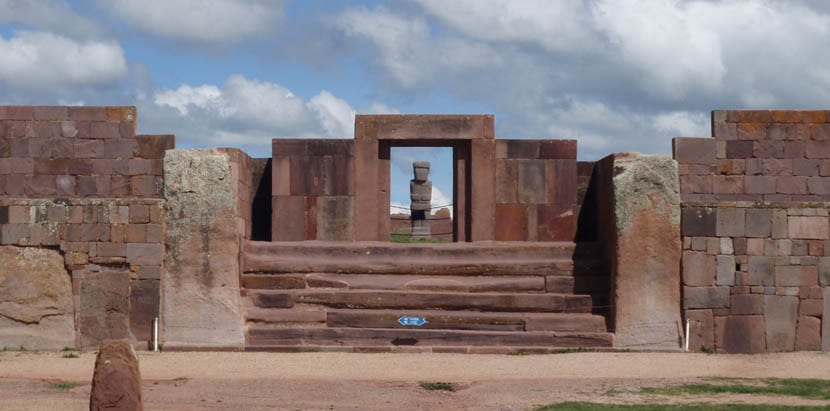
In South America there are many interesting tourist destinations and among them is Bolivia. The Plurinational State of Bolivia is small and rich, in history, in culture, in the greatness of its people, in the courage of its current president and why not, also in archaeological mysteries.
About 15 kilometers from the famous Lake Titicaca are the ruins of Tiahuanaco or Tiwanaku, an archaeological site in the department of La Paz. What is left of his megalithic constructions attracts the attention of archaeologists, visitors, curious and ancient astronaut theologians due to the monstrous size of some stones that make up buildings. One cannot imagine how they were placed in their place or what their carvings mean, many of them perfectly traced, as if to fit together.
Tiahuanaco
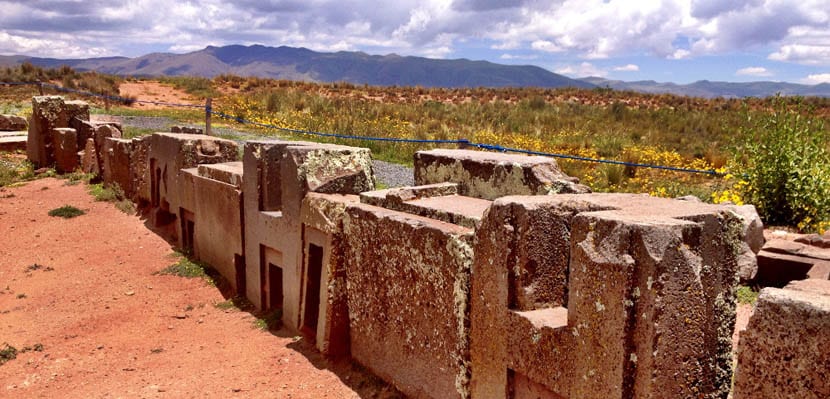
According to Tiahuanaco archaeologists it was the center of the culture of the same name, a culture of pre-Inca origin, livestock and agriculture. This culture not only occupied the lands of present-day Bolivia but also reached beyond, apart from Peru, Chile and Argentina. In its time, the city had a port on Lake Titicaca itself, which today is 15 kilometers away. Some say that the Tihuanaco culture developed between 1500 and 1000 BC, others that between 900 and 800 BC The truth is that one good day he disappeared.
What is also assumed is that the degree of development of this pre-Inca culture can place it as mother of american civilizations or as a powerful and advanced civilization that existed in this part of the world many, many centuries ago, when Europe was still crawling. And why is it said that the tiahuanaco culture was advanced? Is that its buildings are located according to the stars, which reveals knowledge of astronomy, and also its ceramics and textiles speak of a master hand.
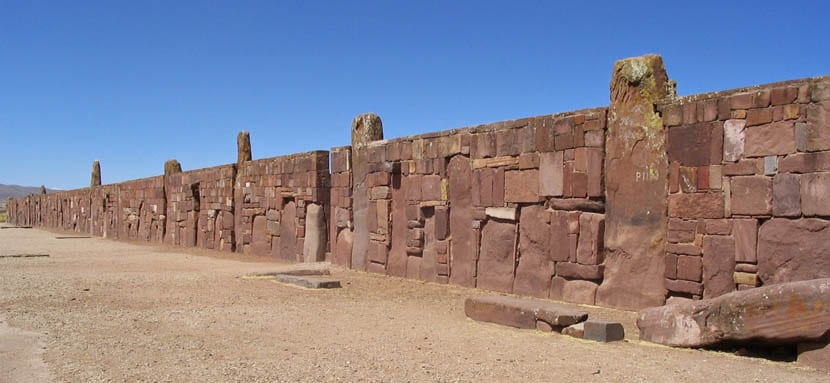
It is worth clarifying that although we call these ruins Tiwanaku or Tiahuanaco the real name is not known. The Spaniards called them Tiahuanaco after questioning the natives and hearing how they themselves named them. More mystery still. The truth is that when you walk through those ruins, you stop under those megalithic portals or you run your hand between the stones, realizing that not a thin paper can enter between two blocks, you can only wonder what wonderful technology could do that.
Archaeologists say that the buildings were lavish, that everything was precisely calculated, that these people knew how to work even metals to adorn the stone and make it shine in the sun. And if it was not enough, everything arranged according to a star map.
What to visit in Tiahuanaco
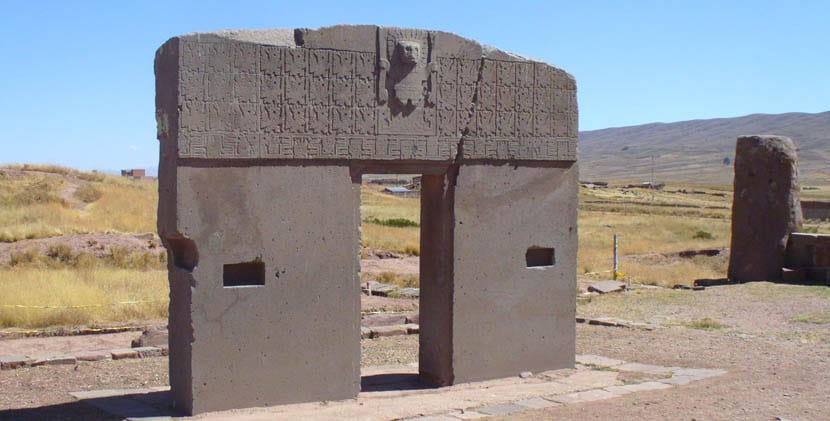
For the door of the sun gets all the applause, that's for sure. It is a portico, portal, which is worked in a single block of stone that must weigh ten tons. The portal was part of a building that is no longer there and that it is speculated could be on the so-called Akapana Pyramid or in kalasasaya, where there are more buildings with that type of stone, andesite. The door has a frieze that represents the sun god with a bird scepter in each hand. There are zoomorphic figures that come out of their heads and some end in solar discs. It looks like the face of a puma and there are around it 32 figures of Sun Men and 16 Eagle Men.

La Akapana pyramid adds mystery to the place. It is 800 meters in perimeter and about 18 meters high. Is a step pyramid of seven terraces and above all there are temples. The Kalasasaya The one I was talking about above, when I was referring to the Puerta del Sol, is the Temple of the Standing Stones. Its design is astrological and apparently it was used to measure the change of season and the solar year. The sun rises from a certain place every equinox and every solstice does the same.
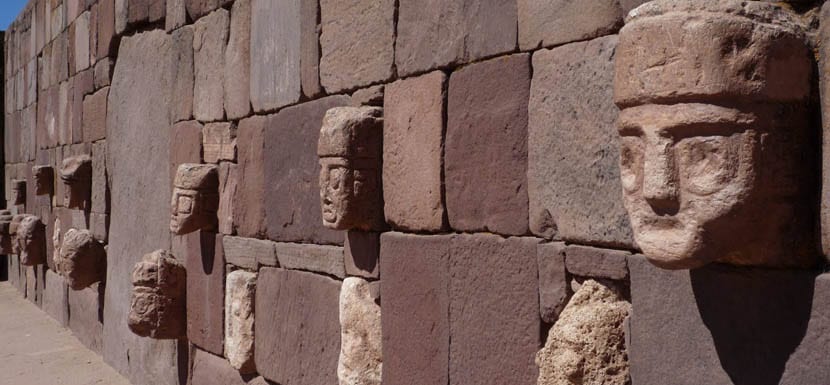
El Ponce monolith It was discovered in 1957 by a Bolivian archaeologist, Carlos Ponce. Its state of conservation is great and the art with which it has been worked the same. It is a human figure holding a sacred vessel o kero. There is also the Temple Underground, more than two meters above ground level, square, with walls and more than 50 pillars and sandstone ashlars that in turn are adorned with limestone heads, all different from each other, as if they were different ethnic groups. The building has a perfect drainage system that still works today.
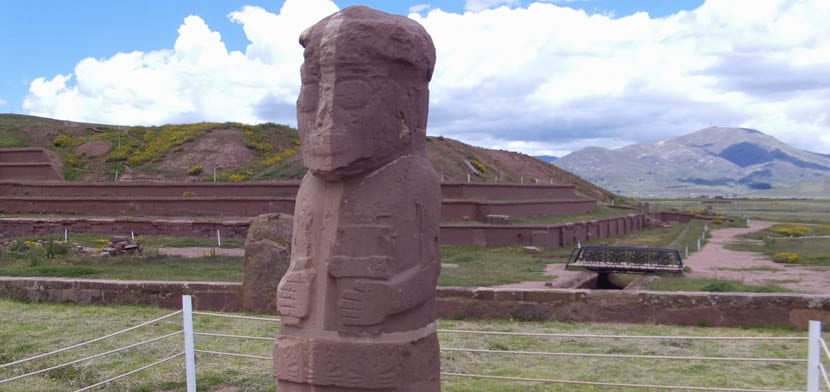
El Pachamama Monolith It is a monolith of more than seven meters high with 20 tons of weight that was taken to La Paz and today it is back in the museum of the place. This monolith was embedded in the floor of this underground temple. Kantatallite It is another interesting structure that shows that the Tihuanaco culture also knew how to carve with curves and used gold as decoration, although of course, gold flew long ago.
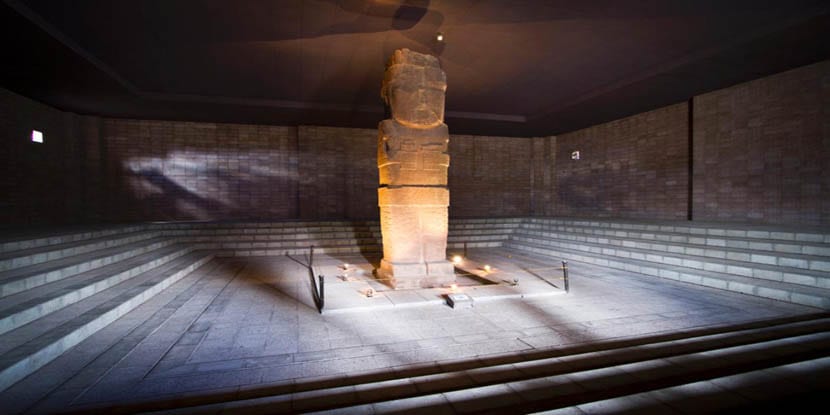
Finally, you should take a close look at the Pumapunko pyramid, Putuni or Palace of the Sarcophagi for its burial chambers with sliding doors, the Monolith Fraile and Gate of the Moon, a monument 2.23 meters high and 23 centimeters thick, an arch with low and high reliefs similar to those of its sister, the Puerta del Sol.
How to go to Tihuanaco
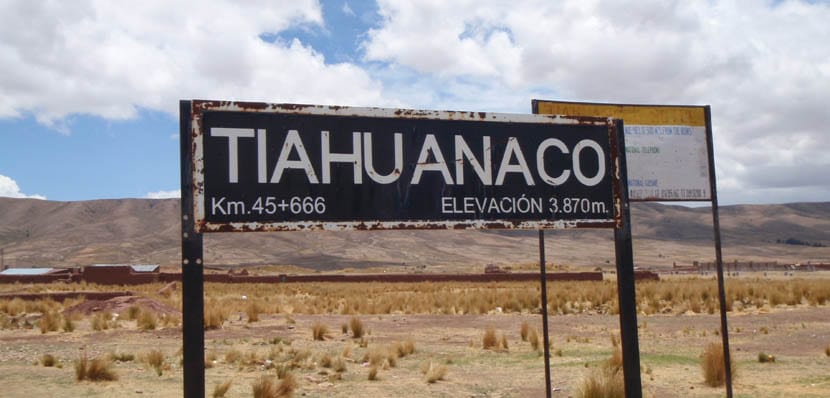
If you are in La Paz you can go in bus. Buses leave from the municipal cemetery area, on José María Asín street, every half hour. The trip is an hour and a half. Other buses leave the center, from Sagárnaga street, in the area of the San Francisco Church. And if not the Bus Terminal. Of course you can also hire a tour in some travel agency.
Tips for visiting Tiahuanaco
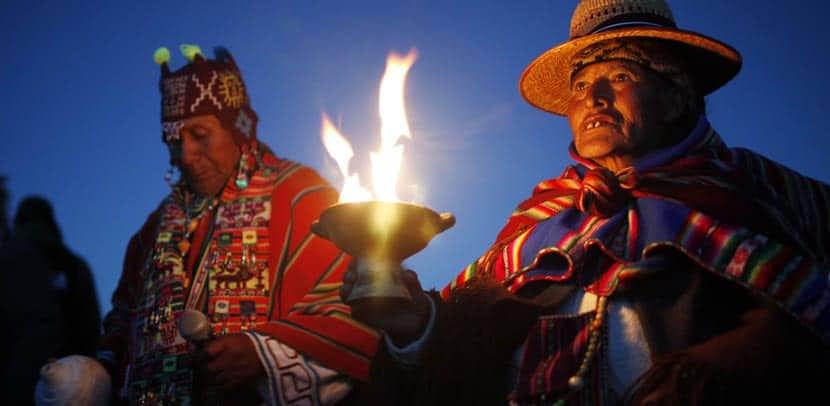
The ruins open from 9 am to 5 pm. You can do the visit in one day or stay the night in a nearby hotel. There is a town near the ruins and if you sleep there you can visit them again early in the morning.
To visit the ruins it suits you bring sunscreen, hat, glasses, a coat light because if it gets cloudy it can be cold or it can drizzle and water. When should you go? Winter begins in June and that ensures good weather and very clear skies. On June 21, the Aymara New Year festivities take place and many bonfires are lit. It is picturesque but the smoke lingers around for a couple of days.
There are tour guides that you can hire on site, to know what you are seeing, and also there is a museum that exhibits the different pieces, textiles and ceramics, that have been found in archaeological excitations. It has a bathroom and a bar.
If you go to Peru, you can approach Tiahuanaco from Puno, on the shores of Lake Titicaca. It is a day trip and you go around the lake. The procedures at the Desaguadero border are simple.